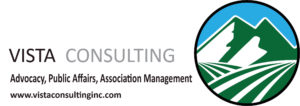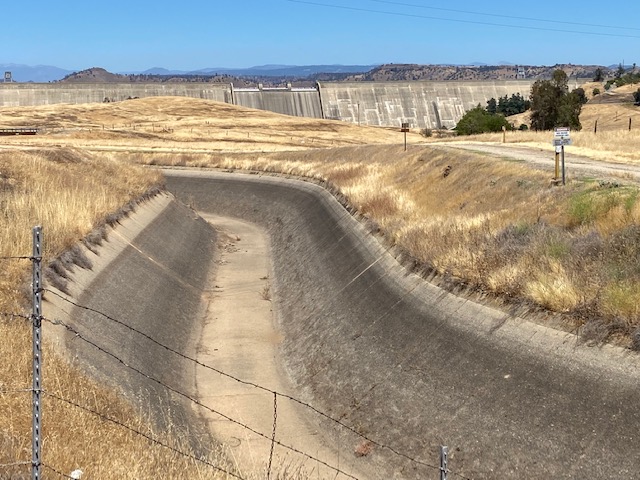Two items of business highlighted the Madera County GSAs board meeting, held by the county supervisors at their regularly scheduled monthly session on the third Tuesday… this month August 17, 2021. Both involved presentations led by Water and Natural Resources Director Stephanie Anagnoson, under the gavel of Chairman Rob Poythress. The supervisors meeting was held in person and via Zoom and the GSA session began shortly after the scheduled 10:30 a.m. start time.
First was an update on the rate study being conducted by Raftelis, the national firm with offices across the U.S. and California offices in SoCal. Attending via Zoom were two of its representatives working on the Madera project, Jim Armstrong and Kevin Kostiuk with the latter presenting the company report. Attendees were reminded that the study is to develop fees for service in the three subbasins in the county GSAs. It’s anticipated the fees will require a “218 election” in the county and if approved, the revenue generated will be used to strategically repurpose and retire property thereby reducing water demand, to create on-farm and dedicated recharge basins, to fund domestic well mitigation and to purchase water supplies when available.
The study is working on identifying all the capital and operational costs for projects and management actions. Different funding options and financing scenarios are being evaluated and a long term financial plan for self-sufficiency of the County GSAs is the goal. The firm is not yet far enough along in its work to provide estimated costs for groundwater allocations to be paid by users. It has identified three ways that water users could be charged, though. One way would be based on irrigated acres on an area basis resulting in a $/acre calculation. A second way would be volumetric, a variable rate based on the amount of water allocated to a property owner or $/AF. And the third would be a hybrid of the two.
There was a brief discussion of what would happen if these plans were defeated in a 218 election and the reply by Ms. Anagnoson was that with only sporadic grant funds available, the GSAs would only be able to monitor water usage, not implement the other programs. Supervisor David Rogers observed that the rate of water usage would have to decline much faster with resulting damage to the county’s economy.
When public comment was invited, farmer Norman Allender thanked the staff for the assistance that had been provided to him in identifying his farming parcels appropriately.
Dairyman Tom Coleman speaking for the Madera Ag Water Association (MAWA) said his group supported the plans being discussed at the meeting but with two requested changes… one, that a there be no limit on the amount of water contracted for being able to be carried over to a future year and two, that if micrometer type flow meters were used to verify usage, they be required to be calibrated only once every five years. The resolution calls for all meters including flow and propeller type meters to be recalibrated every two years. Chairman Poythress pointed out that these two points would be best considered for the next item of business, the resolution establishing groundwater allocation “refinements.”
calls for all meters including flow and propeller type meters to be recalibrated every two years. Chairman Poythress pointed out that these two points would be best considered for the next item of business, the resolution establishing groundwater allocation “refinements.”
Coming next to the microphone was local grower Egal Treibach who described a grant which if cost shared with the county could result in as many as 200 recharge wells put in across the county that would allow rapid use of seasonal water. He asked for a letter of support from the Supervisors for the grant application.
Madeline Harris from the Leadership Council advocated for use of the volumetric approach to payment. She said the result would be that those who are pumping the most would be contributing the most to domestic well mitigation.
Supervisor Rogers commented he would like to see all three fee structure options be studied further.
Resolution about Groundwater Allocation Refinements
With that, Chairman Poythress moved on to the key item of business, the resolution implementing some of the operational specifics of the allocation program. Once again, Director Anagnoson took the podium to review some key concepts and point out important new details. The full resolution had been posted on the county website five days earlier (and is available there).
The resolution reaffirmed that the 2020 Evapotranspiration Applied Water will be used as the baseline which determines the amount of water to be allocated each year through 2025. Beginning in the fall and no later than December 1, eligible parcels would be enrolled and subject to the administrative fee and will receive Sustainable Yield (SY) water and if eligible the Transition Water (TW) for the following year.
The allocation approach and the related fees will not apply to parcels where the use of SY groundwater is for domestic purposes or for stock water associated with livestock grazing.
Item #6 in the resolution said that parcels that used less than the full allocation of SY and TW amounts could carry over up to 50% to a future year, but such water would be subject to the full administrative fees in the year allocated. The resolution says the County GSA may review these practices and change them if it is necessary to fulfill the objectives of the groundwater sustainability plan (GSP).
The resolution also includes a provision that would allow annual adjustments in a farm unit to reflect land sales and acquisitions. Further, if land currently irrigated is taken out of production with irrigation ceasing, that farm unit may continue to access its full allocation of both SY and TW.
The resolution specifies that allocation of SY will be based on the county assessor’s records… the assessor’s parcel number (APN) that identifies the use for parcels. The full acreage amount will be used in the SY calculation if at least 80 percent of the parcel is irrigated or has been as recently as January 1, 2015. This would allow inclusion in the farm unit of areas used for equipment storage or milking parlors in the case of permitted dairies.
A method of resolving disputes over allocation amounts calls for the use of flow meters under controlled circumstances with that information evaluated by a qualified third party. During her presentation, Director Anagnoson said that Fresno State’s water department had been contacted about providing this service.
Supervisor comment was invited after Anagnoson completed her presentation. Mr. Rogers advocated for removal of the 50% restriction on carry over allocated water. He said it’s an unnecessary penalty on property owners since total allocations conform in the GSP in any event. Anagnoson said that as long as the provision allowing the GSA to evaluate and adjust, she wouldn’t object to that provision being removed.
advocated for removal of the 50% restriction on carry over allocated water. He said it’s an unnecessary penalty on property owners since total allocations conform in the GSP in any event. Anagnoson said that as long as the provision allowing the GSA to evaluate and adjust, she wouldn’t object to that provision being removed.
During public comment that followed, Geoff Vanden Heuvel spoke for the Milk Producers Council of California. He first complimented the supervisors and staff for tackling head on the problem of reducing groundwater pumping. He said, “You should feel proud of the progress you’ve made.”
He said he did want to address the 50% carryover limitation. He pointed out that if you carryover, you don’t pump and you do have to pay for it. He said if you limit how much can be carried over you put property owners in the position of “use it or lose it.” He said the GSA will benefit from receiving payment now while actually putting off pumping until later. He said the GSA has a finite amount of TW and asked if it matters whether you use it in 2024 or 2034? He said providing as much flexibility as possible helps landowners reduce the use of groundwater. He went on to said that not pumping water does not create hotspots. He concluded by pointing out that two other provisions of the resolution give the GSA full authority to make adjustments if necessary.
Two more speakers advocated for delaying approval of the resolution to give citizens more time to consider the details. Egal Treibach pointed out too that while public meetings had been held to discuss various options, both the actual resolution approved in June and this one had not been available until only days before the two supervisor meetings where action was to be taken. Madeline Harris made the same point that the specific enabling resolution being considered here had been posted only five days earlier.
been held to discuss various options, both the actual resolution approved in June and this one had not been available until only days before the two supervisor meetings where action was to be taken. Madeline Harris made the same point that the specific enabling resolution being considered here had been posted only five days earlier.
On the topic of publicity, Supervisor Tom Wheeler said that there had been public presentations and Anagnoson pointed out a meeting held earlier in August at the Farm Bureau office and online, with a letter also sent out by the MAWA group.
Chair Poythress asked Anagnoson if there could be undesirable results from allowing unlimited carryover as Vanden Heuvel advocated. She replied that dairies have more flexibility in their cropping decisions, and they can concentrate the location of their pumping. She said there is concern in the western areas of the Chowchilla Subbasin because of subsidence. But she said she could agree to the removal of the limitation, “as long as we can come back to you if we see problem areas.”
Supervisor Rogers added that you don’t want to discourage people from not pumping and that in some cases that water might never be used. He said the wording in that item in the resolution allows the county to take action. Supervisor Wheeler said that we don’t want to slow down this process [of reducing groundwater pumping].
With discussion concluded, it was moved to approve the resolution with the removal of item 6D which limited carryover. The amended resolution was passed unanimously on a roll call vote at just before noon. The supervisors ended the GSA session and recessed the board meeting.
What About Madera ID?
In our report of the Madera Irrigation District board meeting held August 3, we described letters that had been sent by MID to Madera County, criticizing various elements of the GSAs’ plans. We reported that both organizations said they intended to have their representatives meet to discuss these issues. No such meetings have taken place. MID submitted to the supervisors a letter dated August 16, intended to be part of the public comment at the GSA board meeting held August 17.
letters that had been sent by MID to Madera County, criticizing various elements of the GSAs’ plans. We reported that both organizations said they intended to have their representatives meet to discuss these issues. No such meetings have taken place. MID submitted to the supervisors a letter dated August 16, intended to be part of the public comment at the GSA board meeting held August 17.
The letter references the earlier letters and contends the county has not complied with CEQA and continues to do so with the adoption of the “refinements” in the allocation plan. More substantively, MID contends the GSA should present a full and comprehensive plan rather than doing it in what they term a “piecemeal” fashion.
MID points out the complexity of administering an allocation program calling attention to its own responsibilities to allocate Fresno River water with just a few landowners. The MID letter says:
“Without exception, this process is extremely challenging, time-consuming and resource intensive, with numerous landowners contesting MID’s determinations, including frequent administrative appeal hearings and regular litigation – and this with just a few landowners. The County proposes to implement a similar program for over 1200 parcels, and without the benefit of a federally-approved allocation model and distribution protocol.”
The MID letter calls attention to what it says was a poorly administered program requiring county wide installation of flow meters and water level measuring devices back in 2014 saying “to MID’s knowledge, [the program] was never meaningfully implemented or enforced…”
The MID letter concludes: “Therefore, we believe it is imperative for the County to (1) provide additional information regarding how the County intends to implement the Program and (2) develop a contingency plan to address what will occur if the County is unable to effectively implement the Program.”
DISCLAIMER OF RESPONSIBILITY; Waterwrights strives to provide clients with the most complete, up-to-date, and accurate information available. Nevertheless, Waterwrights does not serve as a guarantor of the accuracy or completeness of the information provided, and specifically disclaims any and all responsibility for information that is not accurate, up-to-date, or complete. Waterwrights’ clients therefore rely on the accuracy, completeness and timeliness of information from Waterwrights entirely at their own risk. The opinions expressed in this report are those of the author and do not represent any advertisers or third parties.
most complete, up-to-date, and accurate information available. Nevertheless, Waterwrights does not serve as a guarantor of the accuracy or completeness of the information provided, and specifically disclaims any and all responsibility for information that is not accurate, up-to-date, or complete. Waterwrights’ clients therefore rely on the accuracy, completeness and timeliness of information from Waterwrights entirely at their own risk. The opinions expressed in this report are those of the author and do not represent any advertisers or third parties.
ALL RIGHTS RESERVED. Copyright 2020 by WaterWrights.net
Madera County is comprised of three subbasins, designated by the CA Department of Water Resources as critically overdrafted, and “high priority”: (1) the Chowchilla Subbasin; (2) the Madera Subbasin; and (3) a portion of the Delta-Mendota Subbasin. Each of these subbasins submitted a Groundwater Sustainability Plan (GSP) by January 31, 2020. These subbasins are required to achieve “sustainability” by the year 2040. The method by which sustainability will be achieved will be illustrated in the GSP, which was be drafted in partnership by the irrigation district, water districts, cities and Madera County. The Madera County Groundwater Sustainability Agency (GSA) is administered by the Madera County Department of Water and Natural Resources: Stephanie Anagnoson, Director, 200 W. Fourth Street, Madera, CA 93637, (559) 675-7703 x. 2265 or (559) 675-6573. The County of Madera Board of Supervisors is the Board of Directors of the GSAs for the three subbasins. The current board is composed of five members: Robert Poythress, chair, Brett Frazier, Letitia Gonzalez, David Rogers and Tom Wheeler.


































